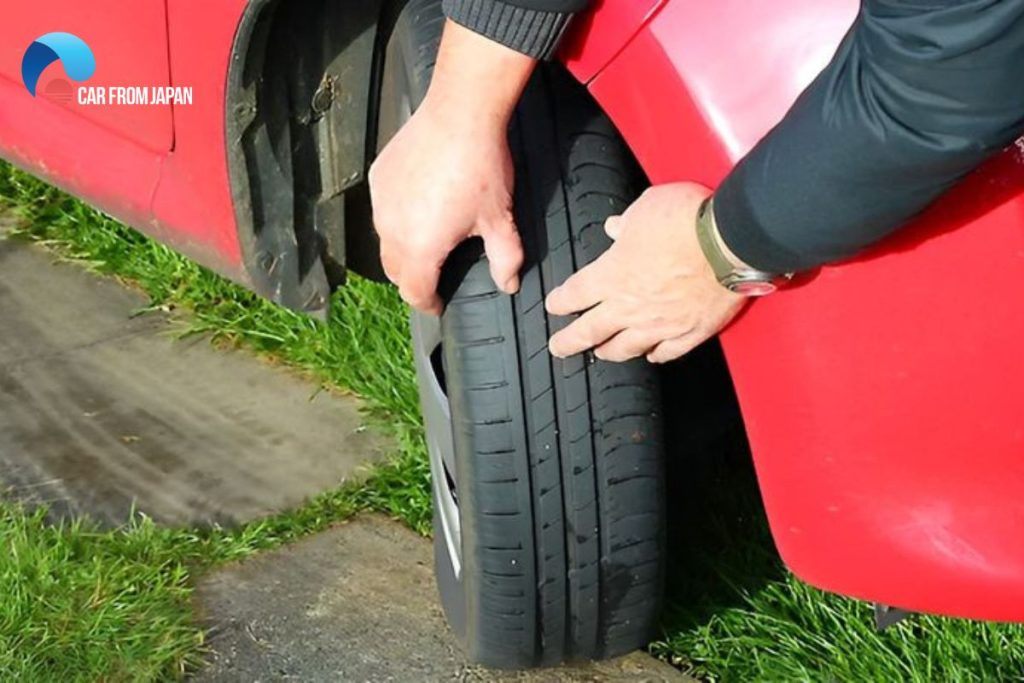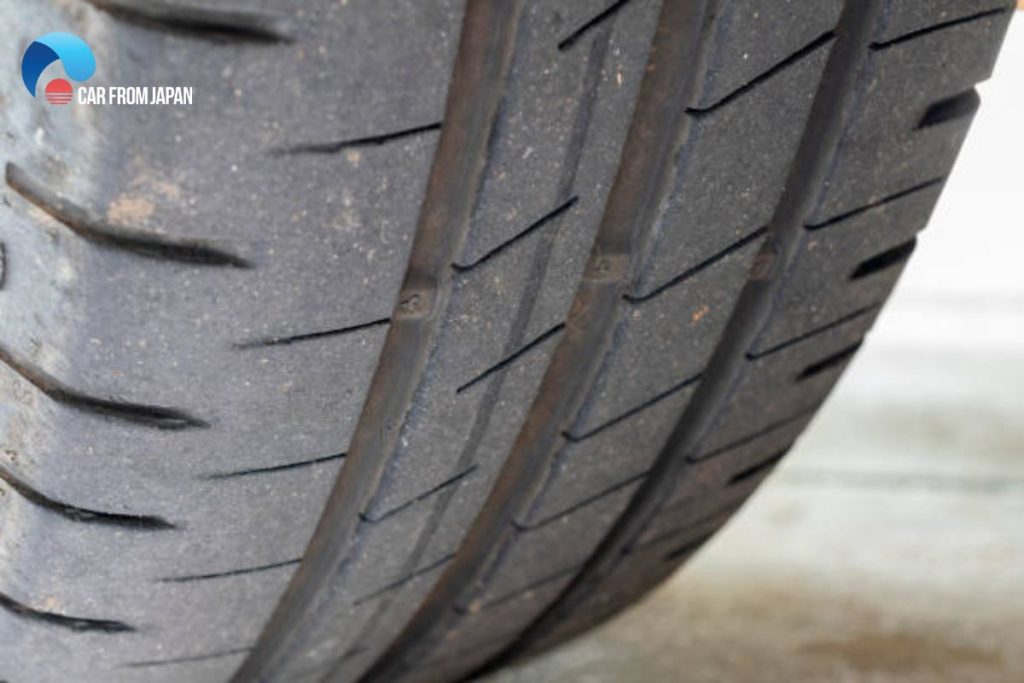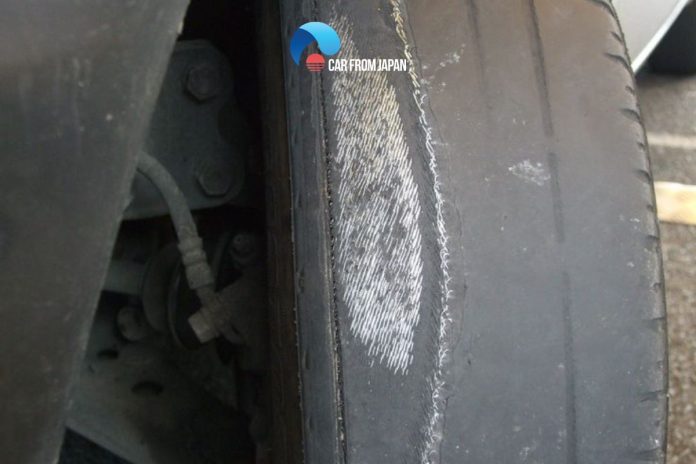Have you ever wondered why some tires wear down on the inside faster than the outside? It’s not just bad luck – there’s a reason behind this common problem. So what are the reasons for tires wearing on the inside?
The inside of tire worn can be a puzzling issue, but understanding the causes can save you money and headaches. Let’s find out the causes and solutions to fix that problem:
Why Are My Car Tires Wearing On The Inside?
In case of too little tire treading, driving the vehicle on the road is unsafe. When your car tire is unable to grip the road, you might lose control of the car. Single precipitation between the tires and the road would require the tire tread to cut through it and maintain contact with the surface. It leads to the issue of tires wearing on the inside edge of your vehicle.
The shallower the tread, the more the risk that you would lose traction while driving in wet or snow.
Camber problem
The primary cause of inside tire wear is the inside of the tread on the front tires wearing faster than the center or outside edge. It is known as the Camber problem. The camber consists of how straight up or down the car tire is with the full weight of the car on it.
If the top of the tires is leaning out, your car has a positive camber angle. However, if the bottom of the tire is leaning to the outside, then you have negative camber. The negative camber is a leading cause of your car tire wearing on the inside.
Worn ball joints
Worn-out ball joints are the second reason for your car tire wearing on the inside. These connect to the tie rods and ensure the car is steering in the right direction. When the tires bounce up and down on the rough road, the ball joints might become worn with time.
It is what makes you wonder as to what causes tires to wear on the inside of your car. We recommend that you browse online to get the best maintenance tips for your car tires.
Bad wheel alignment
The inner tire wear is also caused by bad alignment, which causes the camber to knock out of proper alignment. The car’s front end might be out of alignment for reasons, which can include collision with potholes.
An indication stating that your car wheel needs realignment includes steering pull in one direction while driving on a flat road. It also makes many drivers wonder what causes inner tire wear in the first place.
Drivers should align the tire angles and assess their contact with the road to match the parameters recommended by the manufacturer. There are 3 parameters that the driver needs to pay attention to when aligning the wheel: camber, caster, and toe.

Broken control arm bushing
The whole purpose of a control arm bushing is to connect the vehicle’s frame to the steering knuckles, which provides support to the suspension system. The control arm has a bushing on one side, which will reduce the vibration or the excess play while driving that can directly affect the camber angle.
What will happen when this part is damaged? Inner tire wear is one of the consequences of this problem. As we know, there’s so much movement of the wheel moving front and back up and down, creating the vibration as you’re driving.
When the control arm bushing is broken, it can’t absorb the excess movement. While the tire is rotating throughout the surface of the road, it wobbles and does not make perfect contact with the road and the result is your tire will be worn from the inside.
Improper tire pressure

The inner tire wear is also a sign that the tire pressure is not inflated properly. Following the manufacturer’s instructions on stabilizing tire pressure not only ensures good performance but also helps to slow down tire wear.
If the tire is inflated with too much pressure, the middle part is worn out faster, reducing the contact surface and the level of friction with the road surface, leading to low braking efficiency. Besides, over-inflated tires also cause the car to bounce when moving on the road.
On the contrary, too low pressure causes the tire to deflate. At that time, the sidewalls of the tires are worn out quickly due to more pressure than the middle part, increasing the contact surface, increasing friction, and consuming fuel.
Note that tire wear on the sidewalls can also be caused by frequent overloading even though the pressure is in line with the manufacturer’s recommendations. Thus, tire pressure that is too low or too high is also the cause of tire wear from the inside.
Watch the video to know more:
How To Prevent Inner Tire Wear?
Preventing tire wear from the inside not only increases the lifespan of your tires but also ensures the stable operation of the vehicle. Here are a few tips to help you prevent inner tire wear.
- Vehicle owners need to periodically check the alignment of the wheels and align the wheels by the specifications recommended by the manufacturer. This contributes to reducing tire wear from the inside, especially when cornering and braking sharply.
- Because the front two wheels tend to wear more tires, the owner can change the tires to balance the wear between the front and rear tires.
- Replace with new tires when you notice that the tires are worn too much so as not to affect the driving experience and safety when traveling.
- Regular vehicle maintenance to detect damage to car tires promptly, ensuring safety for drivers.
Is it safe to drive with inner tire wear?
No, inside tire wear can be dangerous. It can lead to blowouts, reduced handling, and increased stopping distances, putting you and others at risk.
How can I tell if my tires are wearing on the inside?
Visually inspect your tires. Look for uneven wear patterns, particularly on the inner edge. You can also feel the tread depth with a tread depth gauge or a penny.
How worn is too worn for tires?
Reaching a tread depth of 2/32 of an inch is a critical threshold for tire safety. At this point, your tires will likely fail a state safety inspection, and you’ll need to replace them to maintain your vehicle’s roadworthiness. Additionally, this minimum tread depth is often the requirement for claiming a tire’s tread-wear warranty.
Do tires wear faster on the inside or outside?
Yes, during a turn, the inner side of the tire bears the brunt of the force, receiving 80% of the load, while the outer side only handles 20%. This uneven distribution of force leads to accelerated wear on the inner tread compared to the rest of the tire.
Summary
While uneven tire wear, particularly on the inside, can be a frustrating and potentially costly issue, understanding its causes empowers you to take control. Remember, factors like improper wheel alignment, suspension problems, and even tire pressure can contribute to this wear pattern.
By addressing these underlying issues through regular maintenance, professional inspections, and timely repairs, you can significantly extend the life of your tires and ensure a safer, smoother driving experience. Don’t ignore the signs – listen to what your tires are telling you and keep them rolling smoothly for miles to come.
Bring a buyer – Earn $100
Our referral program is open to help you earn real money.
- You earn $100 for every successful referral.
- Your audience get $100 off on their purchase, when they use your referral code.
There’s no limit to the rewards you can earn, and no commitment required.





please tell me why ford 02 escape xlt continues with battery lite flikkers…then and light on and now BRAKE light on….then battery or whole car just dead…then after sits for awhile or change batterys out it’s fine for a little while…meanwhile both batterys are staying fully charged ….its not draining my battery plus I changed alternator band battery with brand new also new terminals
continue from off my post or question …myheadlights will never come right on …it takes like time to sit h4 they will turn on .or after I’m driving awhile. why .
What the purpose of neutral gear in the car.how and when to use it.automati cars.
Thanks very much for your education it’s very helpful to me
Puts less stress on the engine when stopped or sitting for longer periods of time
My car a Mitsubishi Outlander starts to vibrate at the front and staring wheel whenever it exceedsva speed of 100km per hour. What is the problem?